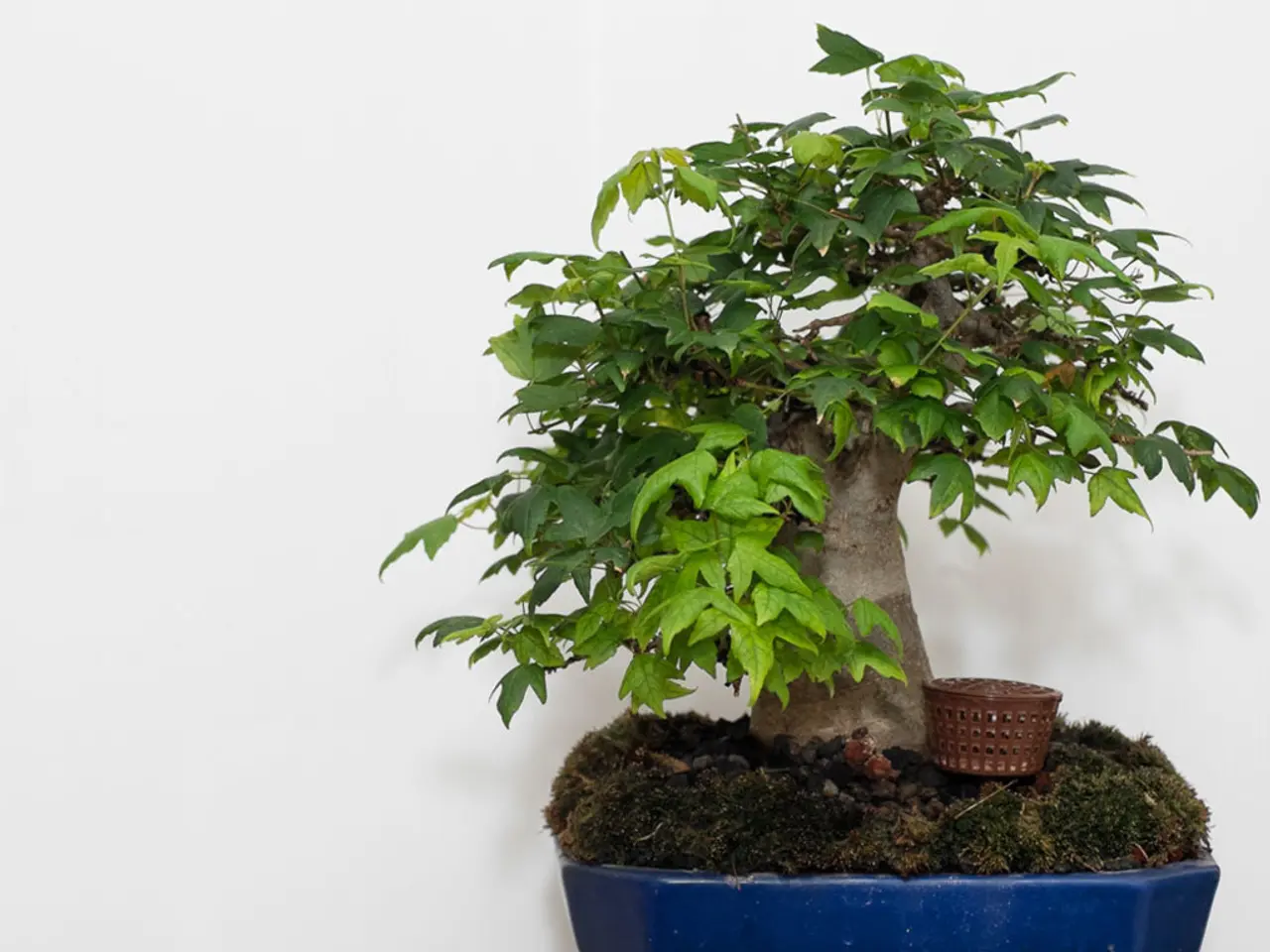"Slanting Bonsai Artistry: Techniques for Creating Balance and Visual Drama"
Slanting bonsai, a unique and dynamic style of bonsai, embodies the intricate dance between human creativity and the natural world. This style represents the resilience of trees and the eternal struggle between growth and adversity.
Tree Species Selection
Choosing the right tree species is crucial for creating a successful slanting bonsai. Suitable species are those that naturally lean or bend due to wind or light conditions, such as maple family trees, decorative conifers, and blossoming trees like pomegranate. The key is selecting trees that can withstand wiring and bending without damage and whose natural growth complements the planned trunk angle.
Wiring Techniques
Wiring is essential for shaping the trunk and branches into the slanting posture. The main trunk should be wired to bend at an angle between 60 to 80 degrees from vertical, creating the strong lean characteristic of slanting style. Individual branches should then be wired to maintain balance and prevent visual top-heaviness. Flexible but sturdy wire, such as aluminum or annealed copper, should be used to avoid trunk or branch damage during bending. The wiring should encourage growth in the desired directions and be reapplied as the tree grows to maintain shape.
Trunk Angle Shaping
The core feature of a slanting bonsai is a trunk that slants distinctly to one side, often resembling a tree bent by wind or growing toward sunlight. The trunk may have one or two bends but maintains a triangular overall silhouette when viewed from the front. Unlike informal upright styles, in slanting bonsai, the apex is noticeably offset, emphasizing the lean. The mid-trunk section is often straighter to highlight the slanting angle, sometimes enhanced by tilting the whole tree pot to improve movement visually.
Foliage Distribution Patterns
The foliage should balance the slant visually while maintaining naturalism. Branches on the slanting side tend to be shorter or less dense, preventing excessive weight visually. Foliage is often fuller on the opposite side of the lean to counterbalance visually but is distributed asymmetrically to keep the dynamic tension. The crown is usually placed above the base but offset laterally consistent with the trunk lean. Some practitioners add Jin (deadwood features) on branches or parts of the trunk to simulate natural wind damage or aging, enhancing the storytelling effect of the tree’s struggle against the elements.
Summary
These steps collectively help create a natural yet artistically compelling slanting bonsai that embodies movement, balance, and the narrative of survival in nature. A well-defined root flare, where the trunk flares outward at the base, is essential for creating a slanting bonsai that exudes stability and dynamic energy. The strategic placement of branches and management of foliage density is critical in creating a sense of balance and harmony along the leaning trunk of a slanting bonsai. In the domain of bonsai, the slanting style stands as a declaration to the indomitable will of nature, where the forces of wind and gravity are harnessed to create a work of art that exudes dynamism and visual impact.
| Aspect | Techniques/Considerations | |----------------------|-----------------------------------------------------------------| | Tree species | Maples, decorative conifers, bonsai-suitable blossoming trees | | Wiring techniques | Wire trunk for 60–80° lean; branch wiring for balance | | Trunk shaping | One or two bends, offset apex, triangular silhouette | | Foliage distribution | Asymmetrical; fuller opposite lean; balance visual weight | | Additional features | Use Jin (deadwood) for naturalistic texture and realism |
- To bring a slanting bonsai to life and maintain its energy, it's crucial to consider home-and-garden aspects like selecting the correct tree species, such as maple family trees, decorative conifers, or blossoming trees like pomegranate, that can withstand wiring and bending.
- The gardening process includes wiring techniques to shape the trunk and branches into the slanting posture, using flexible but sturdy wire like aluminum or annealed copper, and strategically placing branches and managing foliage density to create a sense of balance and harmony along the leaning trunk, mimicking the natural dance between human creativity and the natural world.




